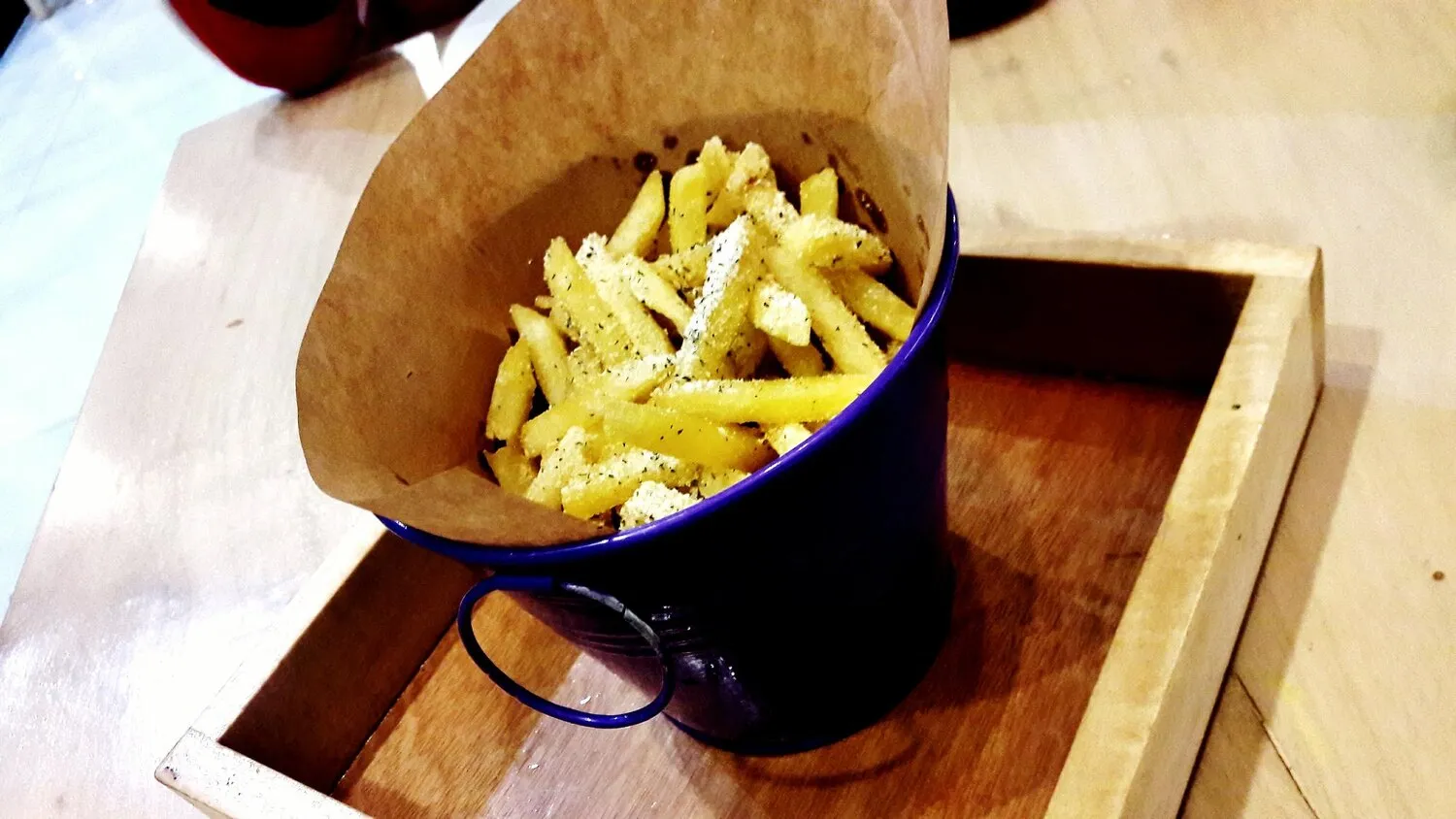
Belgian Fries
Crispy, double-fried Belgian-style fries.
Nutrition Facts
* The % Daily Value (DV) tells you how much a nutrient in a serving of food contributes to a daily diet. 2,000 calories a day is used for general nutrition advice.
While often mistakenly attributed to France, fries (or chips) have a strong claim to Belgian origins. The story goes that during a particularly harsh winter in the Meuse valley, the rivers froze, preventing locals from catching small fish, their usual fried fare. As a substitute, they sliced potatoes into the shape of small fish and fried them. Whether this is fact or folklore, fries have become a national symbol.
Fries are deeply ingrained in Belgian culture, not just as a snack, but as a social and culinary staple. They are commonly served in a paper cone ('cornet') or a cardboard tray, often accompanied by a variety of sauces.
Friteries
Friteries (or 'fritkot' in Flemish) are a ubiquitous sight in Belgium – small, independent stands or shops dedicated solely to frying and selling fries. They are a cornerstone of Belgian street food culture.
National Dish Status
While Belgium has other notable dishes, fries are arguably its most iconic and internationally recognized culinary contribution. They represent a casual, accessible, and comforting food enjoyed by people of all ages and backgrounds.
Sauce Selection
The vast array of sauces available with fries is a point of pride in Belgium. From traditional mayonnaise to more adventurous options like Andalouse, Samurai, and Joppiesaus, the sauce selection is a key part of the Belgian fries experience.
Belgian fries offer a satisfying combination of crispy exterior and fluffy interior, with a savory, slightly salty potato flavor enhanced by the choice of dipping sauce.
The primary flavor is that of the potato itself, typically a starchy variety like Bintje. The double-frying process is crucial: the initial fry at a lower temperature cooks the inside, creating a soft, almost creamy texture, while the second fry at a higher temperature crisps the exterior to a golden-brown perfection. Salt is the main seasoning, and the choice of dipping sauce, ranging from mayonnaise to ketchup to more exotic options like andalouse or samurai sauce, significantly impacts the overall flavor profile.
Potato Choice
Use starchy potatoes like Bintje (ideal if available), Russet, or Maris Piper. The starch content contributes to the fluffy interior.
Double Frying
The double-frying method is non-negotiable. The first fry (around 150-160°C or 300-320°F) cooks the inside, while the second fry (around 180-190°C or 350-375°F) crisps the outside. Allow the fries to cool completely between fries.
Oil Choice
Traditionally, beef fat (beef dripping) was used for frying, imparting a distinctive flavor. However, vegetable oil, peanut oil, or a blend of oils are also acceptable alternatives. Choose an oil with a high smoke point.
Salt Strategically
Salt the fries immediately after the second frying while they are still hot. This allows the salt to adhere better.
Explore additional Fries dishes and restaurants
Explore FriesDiscover top dining spots and culinary experiences in San Mateo.
Explore San MateoLearn more about the food culture, restaurant scene, and culinary heritage of United States.
Explore United States